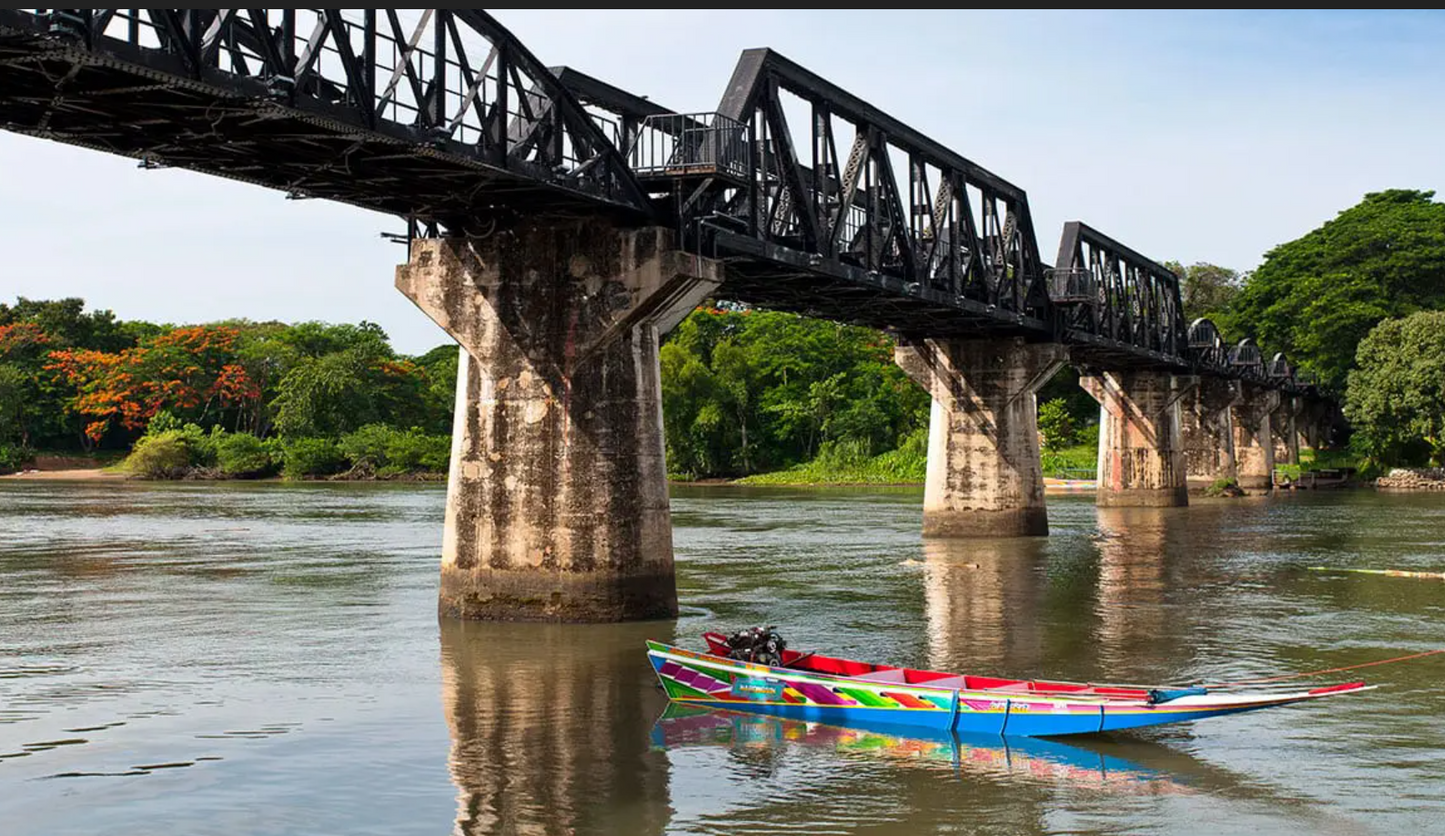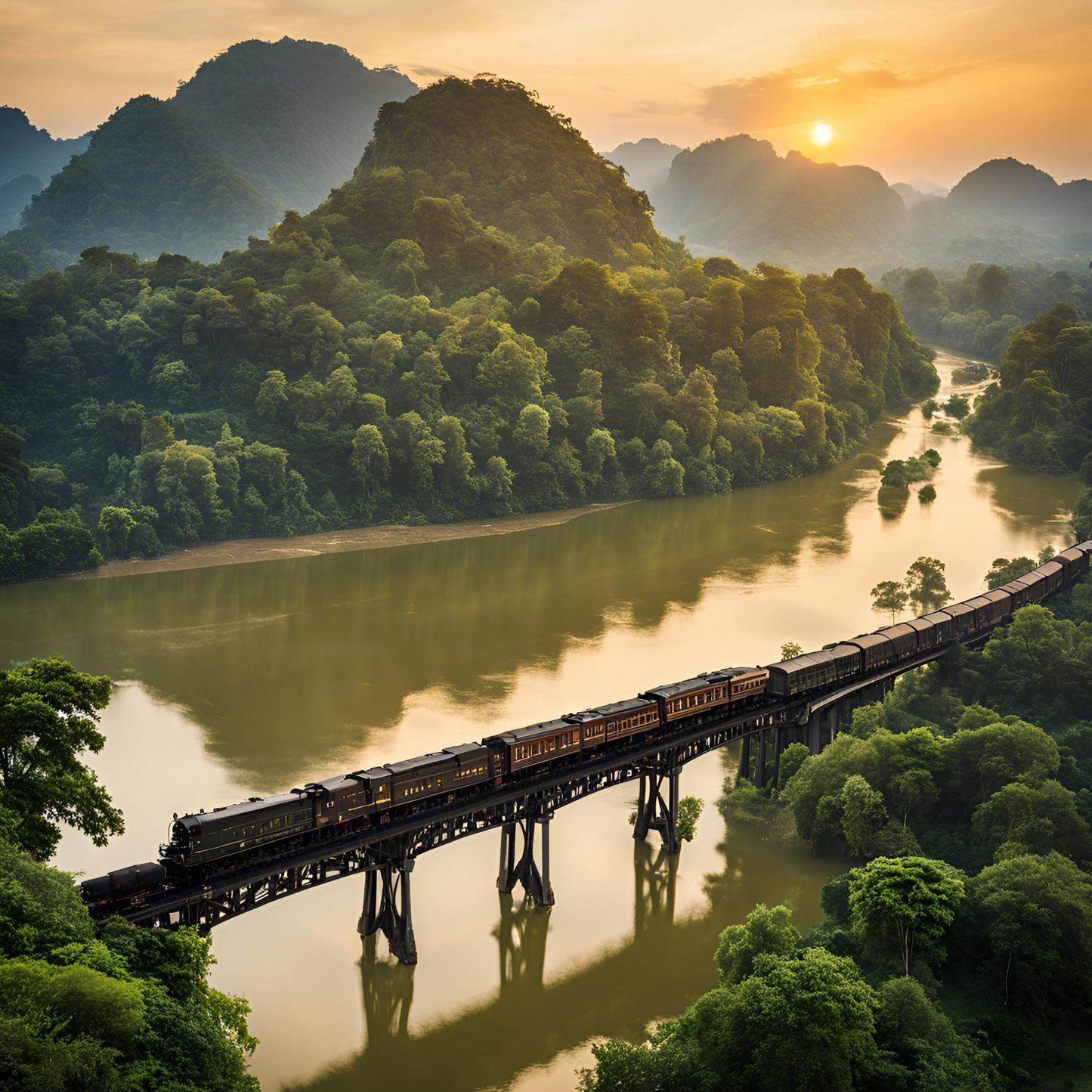
Trip to Thai
From Bangkok: Historical Day Trip to River Kwai
From Bangkok: Historical Day Trip to River Kwai
Couldn't load pickup availability
Details Activity:
Embark on a historical day tour to River Kwai and immerse yourself in the fascinating history of the region. Explore the iconic Bridge over the River Kwai and visit the POW Cemetery, where over 6,000 prisoners of war are laid to rest. Learn about the events that took place during World War II and gain a deeper understanding of this significant time period.
Highlight Tour
If we could take a step back in time to the era of the Bridge on the River Kwai and the Death Railway, we'd find ourselves in the midst of one of the most tragic chapters of World War II. The year would be around 1942, and the Japanese Empire was building the railway to connect Thailand and Burma. This ambitious project was intended to facilitate the movement of troops and supplies, but the cost was incredibly high — in human lives.
The Bridge on the River Kwai, part of the railway, would be under construction by prisoners of war and forced laborers, both Allied POWs and local workers. The conditions were horrific: disease, exhaustion, poor nutrition, and cruel treatment were daily realities for those forced into this backbreaking work. As many as 100,000 laborers are estimated to have perished during the construction, earning the railway its nickname, the Death Railway.
Imagine the scene: thousands of men working tirelessly under the blazing sun, the air thick with humidity, their bodies weak and sick from malnutrition, yet driven by the brutal demands of their captors. The sound of hammering and the clattering of tools would echo in the jungle, mixed with the cries of men struggling to survive.
Fast forward to today, and the Bridge on the River Kwai still stands as a somber reminder of the past. The Thailand-Burma Railway Centre in Kanchanaburi offers a poignant look at the history of the railway and the immense suffering involved in its creation. Visitors can explore the stories of the prisoners through interactive exhibits and personal testimonies, while also learning about the broader impact of the railway during the war.
The museum and nearby Kanchanaburi War Cemetery serve as places of reflection and remembrance, honoring the sacrifices of those who endured unimaginable hardships. Despite the dark history, the site now also represents a triumph of resilience and survival, as it stands as a testament to the strength of the human spirit even in the face of such adversity.
Includes:
- English-speaking guide: A professional guide who speaks English to assist the group throughout the tour.
- Porterage: The service where porters handle the luggage, typically in hotels or stations.
- Entrance fees: Fees for entry to various tourist attractions or sites during the tour.
- Transportation to Kanchanaburi by air-conditioned van: Travel to Kanchanaburi using a comfortable, air-conditioned van.
- Basic train fee on the Death Railway track (THB 100): The cost of a standard ticket for a ride on the famous Death Railway.
Share




